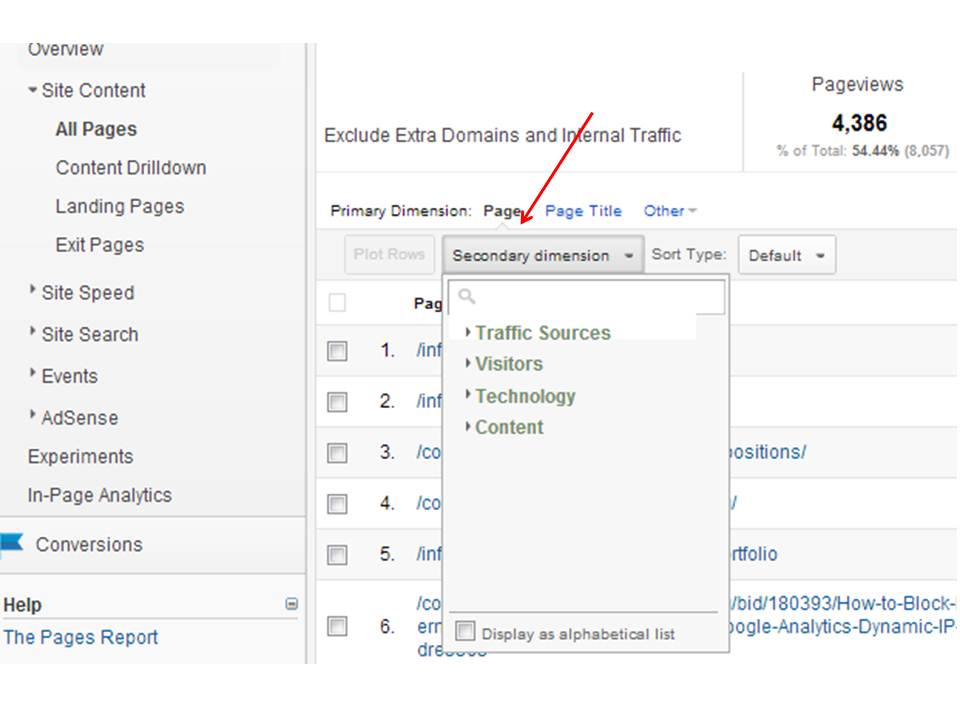Deep Dive into the 'Secondary Dimension' in Google Analytics: Everything You Should Understand
Deep Dive into the 'Secondary Dimension' in Google Analytics: Everything You Should Understand
Blog Article
Deciphering the Relevance of Additional Dimension in Google Analytics: Everything About Its Significance and Impact
In the realm of digital analytics, the use of additional measurements within Google Analytics offers as an essential device for discerning much deeper layers of information insights. The importance of additional dimensions lies in their capacity to supply a nuanced view of customer habits and interaction with an internet site or platform.
Recognizing Secondary Dimensions in Google Analytics
The understanding of second measurements in Google Analytics is vital for gaining deeper understandings right into customer behavior and site efficiency. While key dimensions offer basic data factors such as traffic sources and web page views, additional dimensions permit for a more nuanced analysis by supplying additional context to these primary metrics. By integrating second measurements, individuals can sector and filter their data to discover patterns and patterns that might not be immediately obvious.

Revealing the Advantages of Additional Measurements
Building upon the fundamental understanding of secondary dimensions in Google Analytics, discovering the benefits they supply exposes indispensable insights for improving information evaluation and decision-making. By integrating additional dimensions, users can dig deeper right into their information, obtaining an extra thorough view of individual habits, material performance, and various other essential metrics. Among the primary advantages is the ability to section data, allowing for a more granular analysis of numerous measurements such as website traffic sources, devices, demographics, and much more. This division allows users to identify patterns, fads, and correlations that might not appear when considering data in aggregate.
Furthermore, additional dimensions provide context to key information, providing extra layers of information that can aid in understanding individual communications and preferences. This boosted understanding can guide strategic decision-making, causing more targeted advertising projects, site optimizations, and total enhanced efficiency. In essence, second dimensions work as a powerful tool for opening much deeper insights and making the most of the energy of Google Analytics for businesses and web site proprietors.
Leveraging Additional Dimensions for Boosted Insights
By using the power of additional dimensions in Google Analytics, companies can uncover deeper understandings that drive educated tactical and decision-making optimization efforts. Leveraging additional measurements permits businesses to dive past surface-level information and obtain an extra comprehensive understanding of user behavior, audience demographics, traffic resources, and internet site efficiency. By combining main dimensions like traffic resources with additional measurements such as geographical location or tool group, companies can identify which areas or devices are driving the most important traffic to their site.
Furthermore, secondary measurements enable services to section and evaluate information better, helping them determine fads, patterns, and opportunities that might have or else gone undetected. By using second dimensions, companies can customize their advertising approaches, material, and customer experience to better satisfy the demands and preferences of their target audience. In significance, leveraging secondary dimensions in Google Analytics equips companies to make data-driven choices that cause boosted efficiency, increased ROI, and sustainable development.

Effect of Secondary Dimensions on Information Evaluation
Enhancing data evaluation via the application of secondary measurements in Google Analytics provides services with a deeper understanding of their on the internet efficiency metrics. By integrating additional measurements, such as time of day, geographic area, or gadget category, organizations can discover beneficial insights that may have been forgotten with main dimensions alone. This improved level of granularity allows for more exact segmentation of information, allowing services to identify patterns, fads, and connections that can drive strategic decision-making.

Making The Most Of Possible: Second Dimensions Strategies
One key technique is to integrate additional measurements with key measurements to acquire an extensive sight of user communications. Combining the key measurement of 'source/medium' with second measurements like 'landing web page' or 'device group' can reveal which networks are driving website traffic to particular web pages or how individual actions varies throughout tools.
Furthermore, making use of secondary dimensions to section information based upon individual demographics, actions, or technology can assist businesses customize their marketing initiatives to certain audience sections. This targeted approach can lead to boosted conversion prices, boosted user experiences, and eventually, boosted ROI. By taking full advantage of the possibility of second measurements in Google Analytics, services can make educated choices, optimize their on the internet visibility, and drive sustainable growth.
Verdict
In conclusion, secondary measurements in Google Analytics play a crucial function in providing deeper insights and improving information analysis. Including secondary measurements into data evaluation techniques can lead to even more educated decision-making and boosted general efficiency.
While key dimensions give fundamental information factors such as website traffic sources her latest blog and page sights, second dimensions allow for a much more nuanced evaluation by offering added context to these key metrics. By combining Read More Here primary measurements like traffic sources with secondary dimensions such as geographical area or tool category, businesses can identify which tools or areas are driving the most important web traffic to their web site.
By including additional measurements, such as time of day, geographical area, or tool classification, services can reveal important understandings that might have been ignored with key measurements alone. One vital method is to integrate second dimensions with main dimensions to get an extensive view of customer interactions. Matching the primary measurement of 'source/medium' with secondary measurements like 'landing page' or 'gadget category' can disclose which channels are driving web traffic to details web pages or how user habits varies across devices.
Report this page